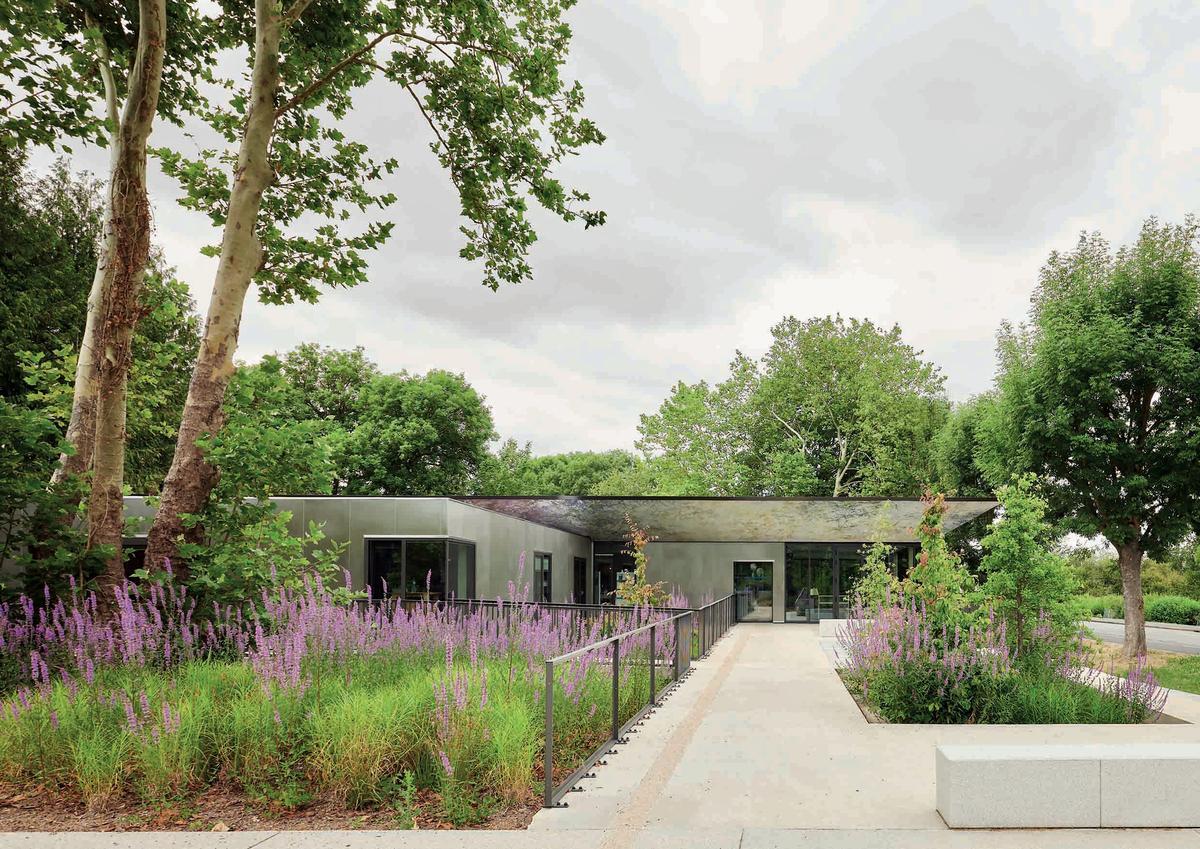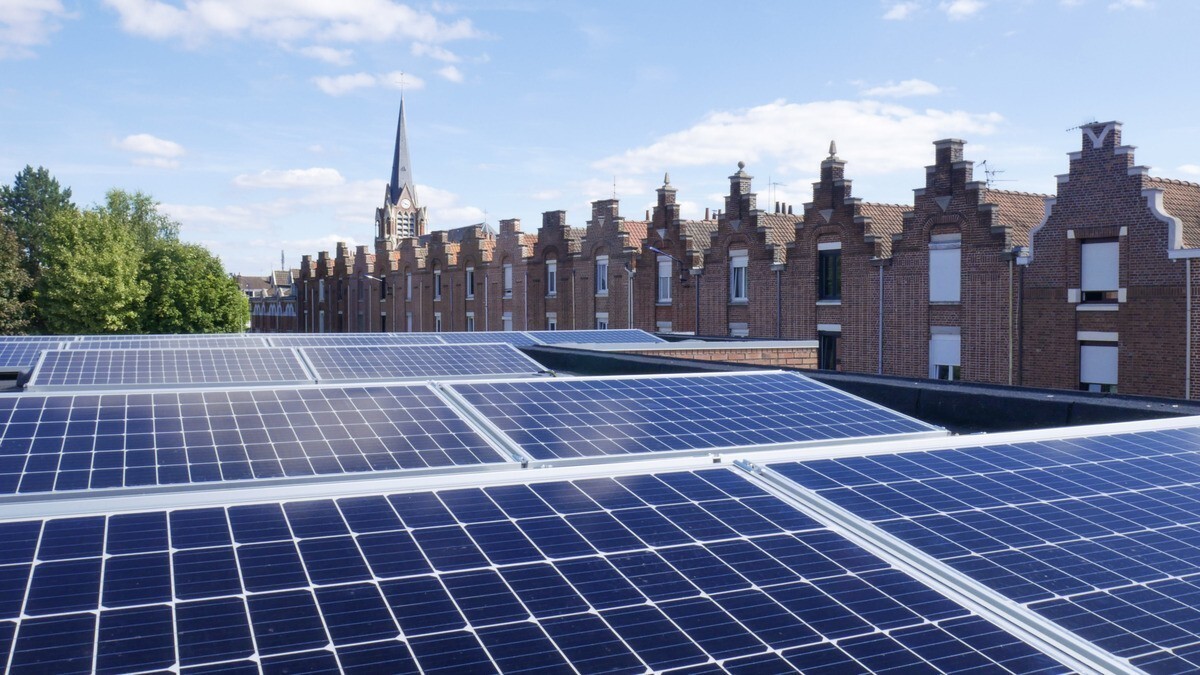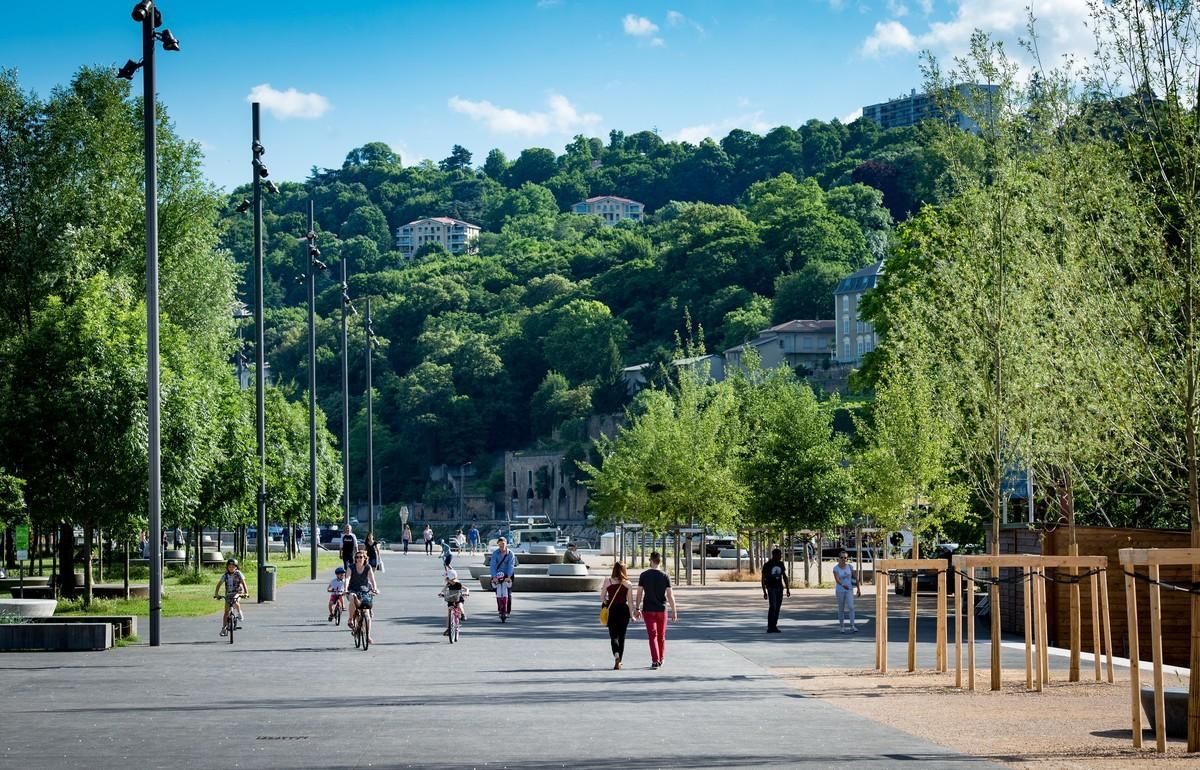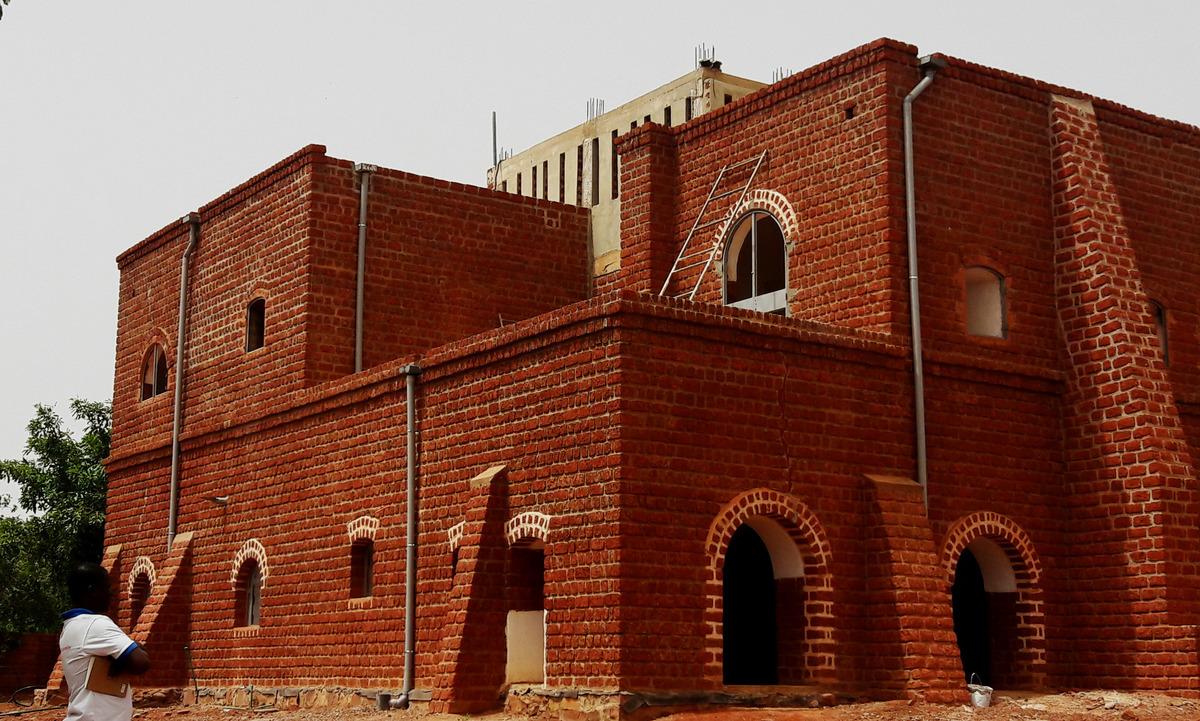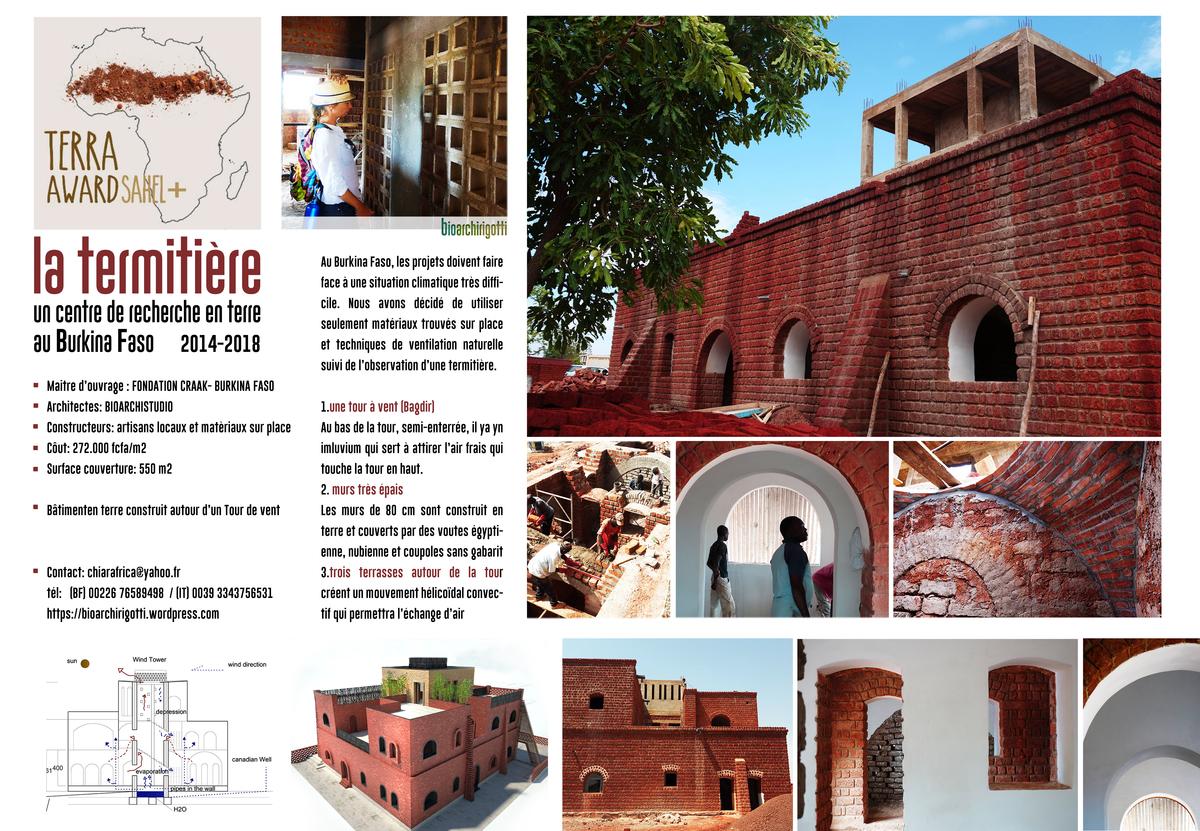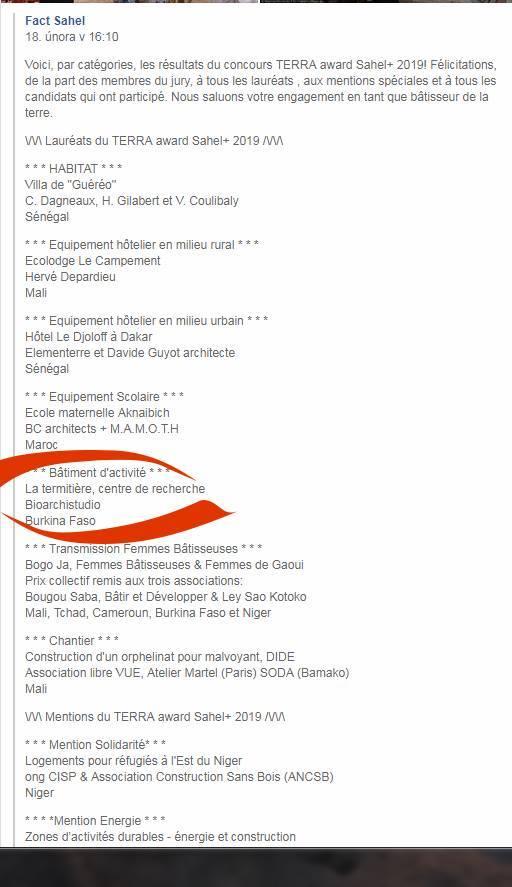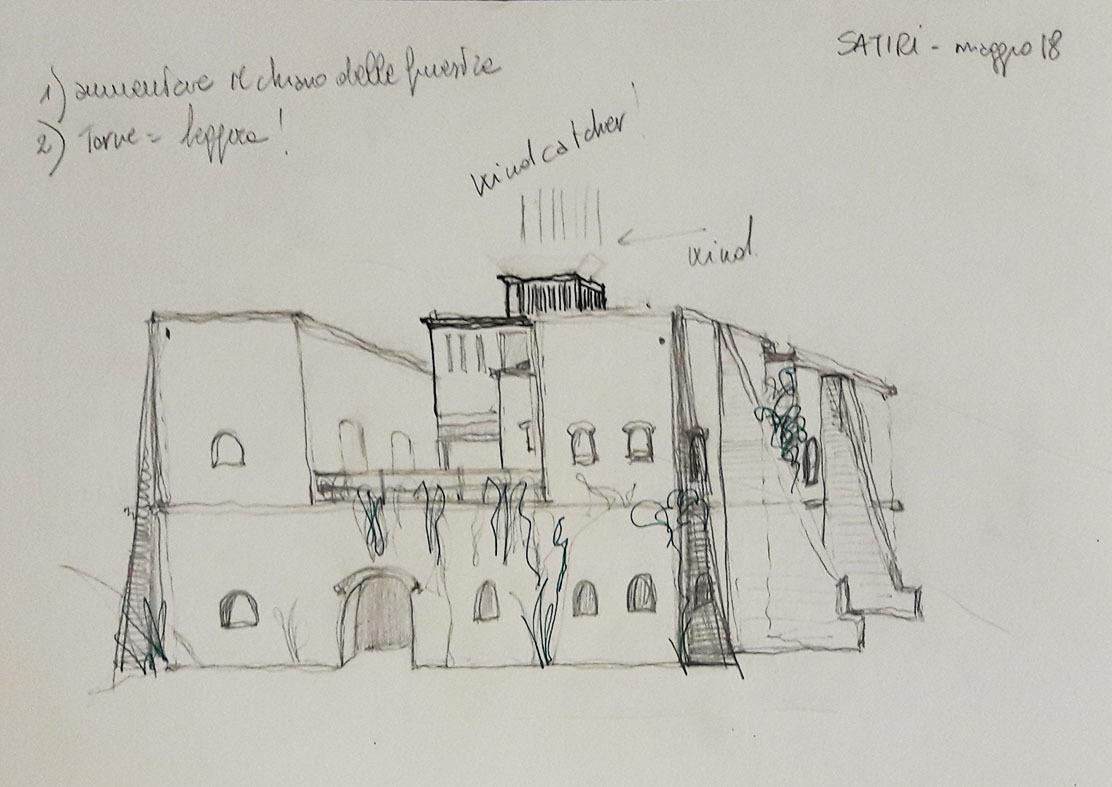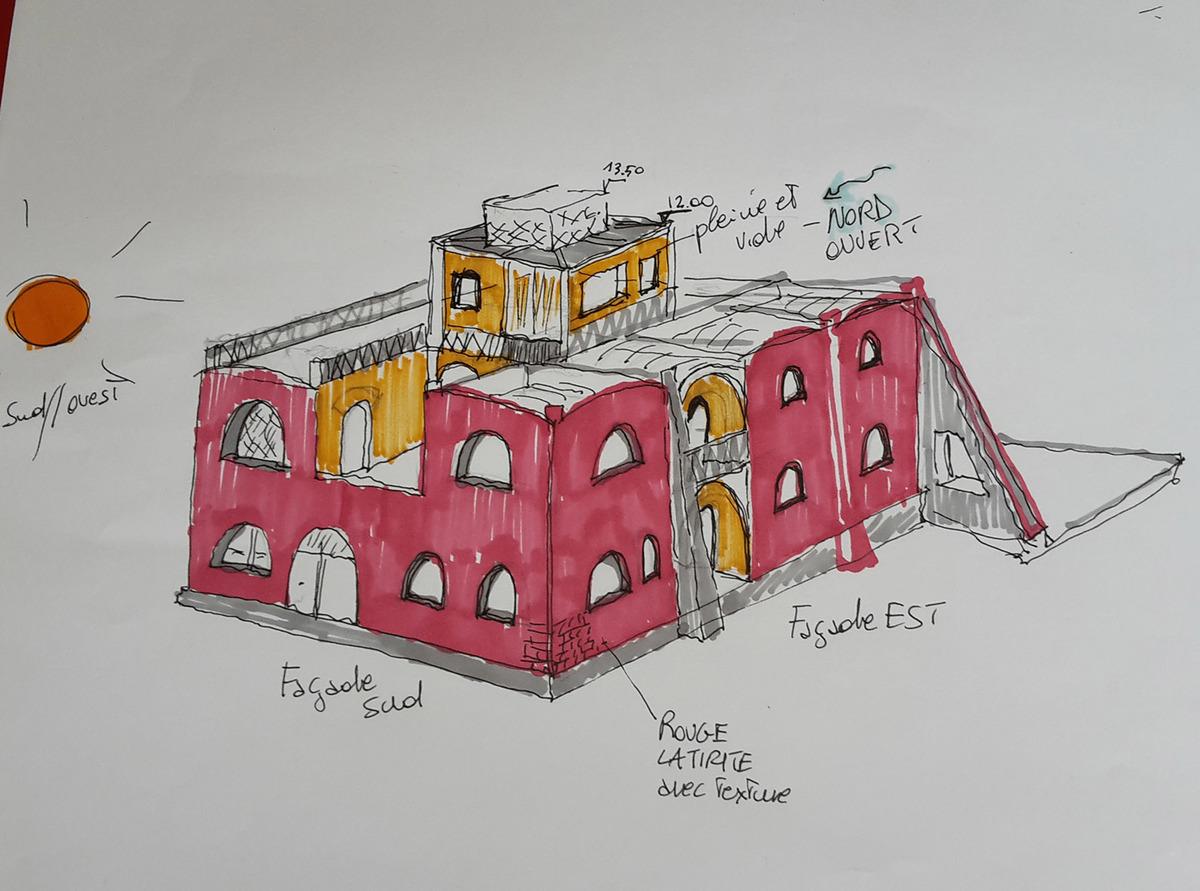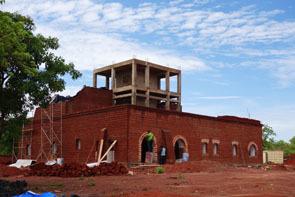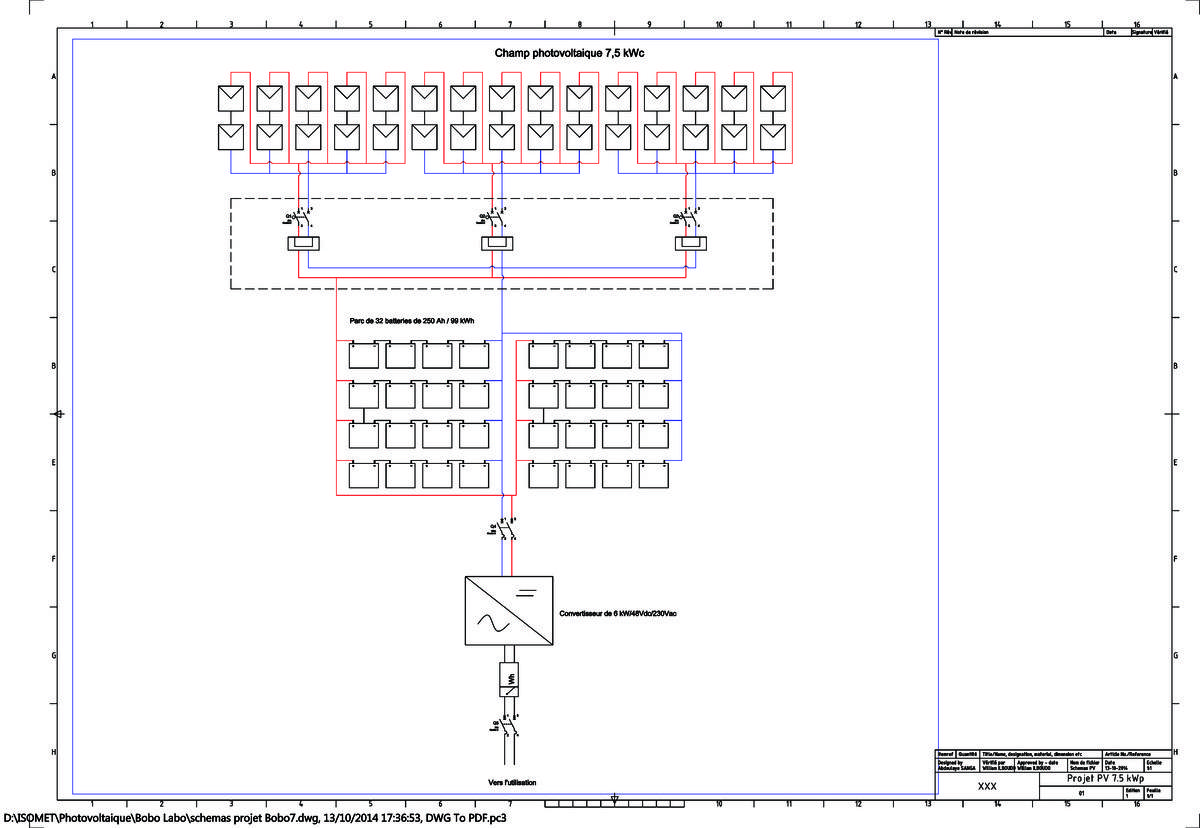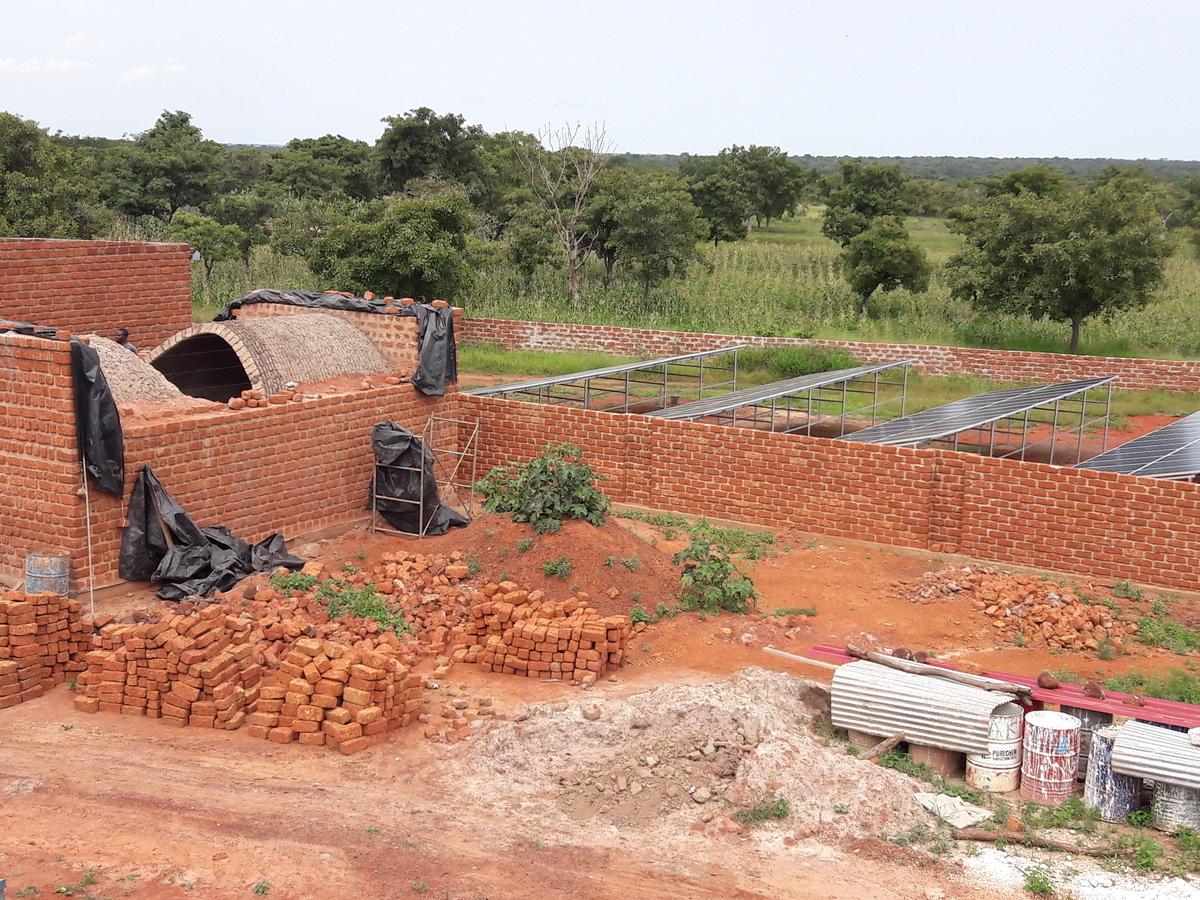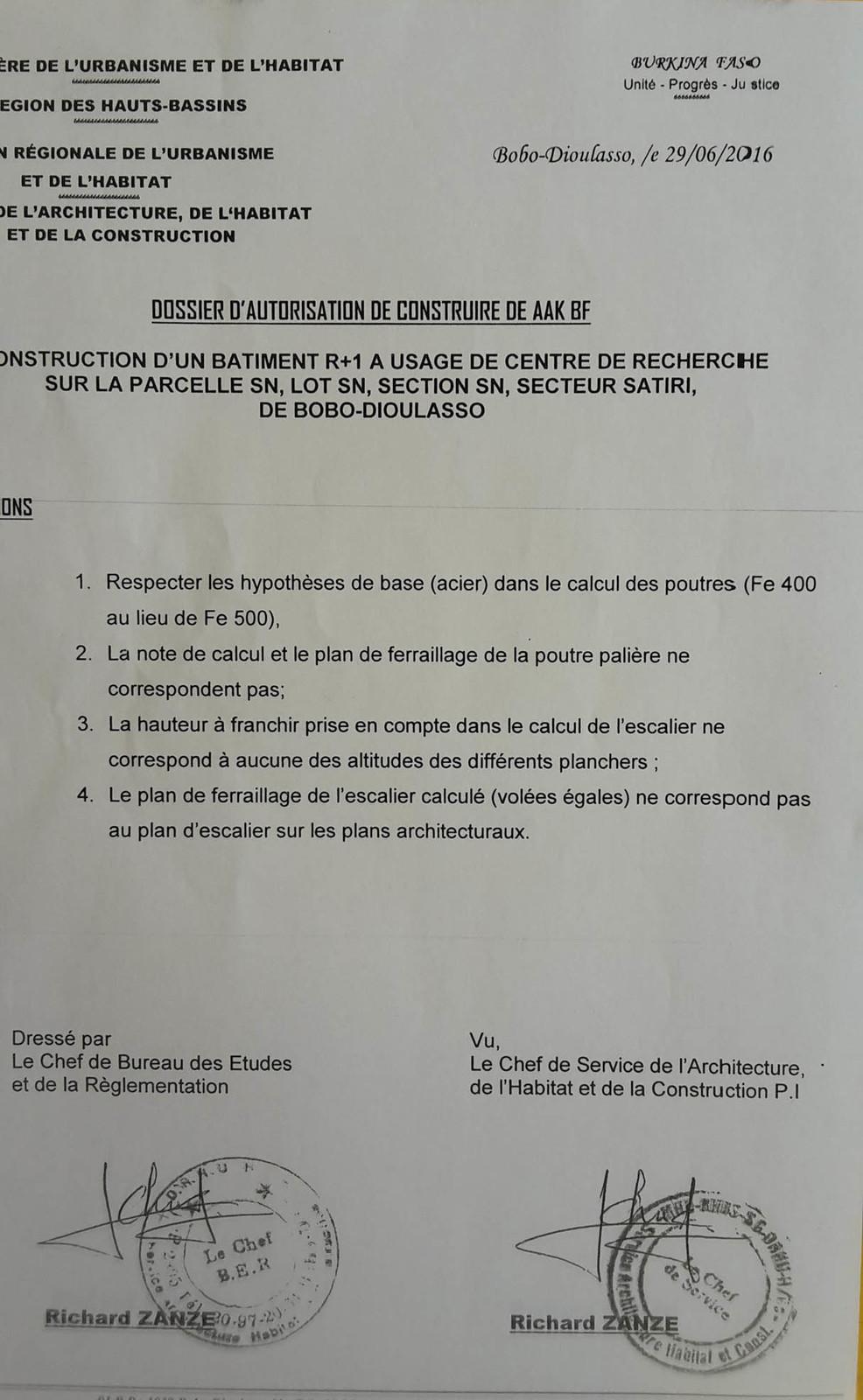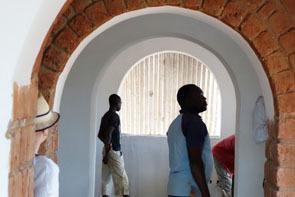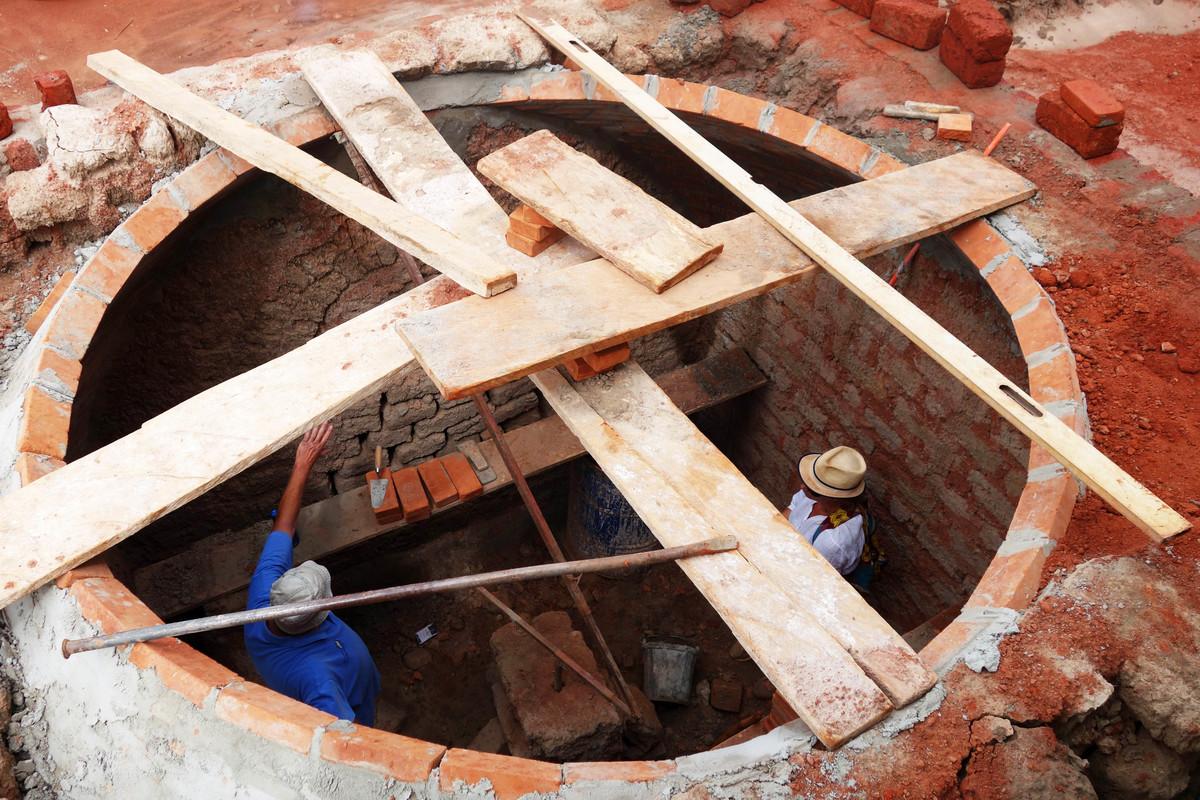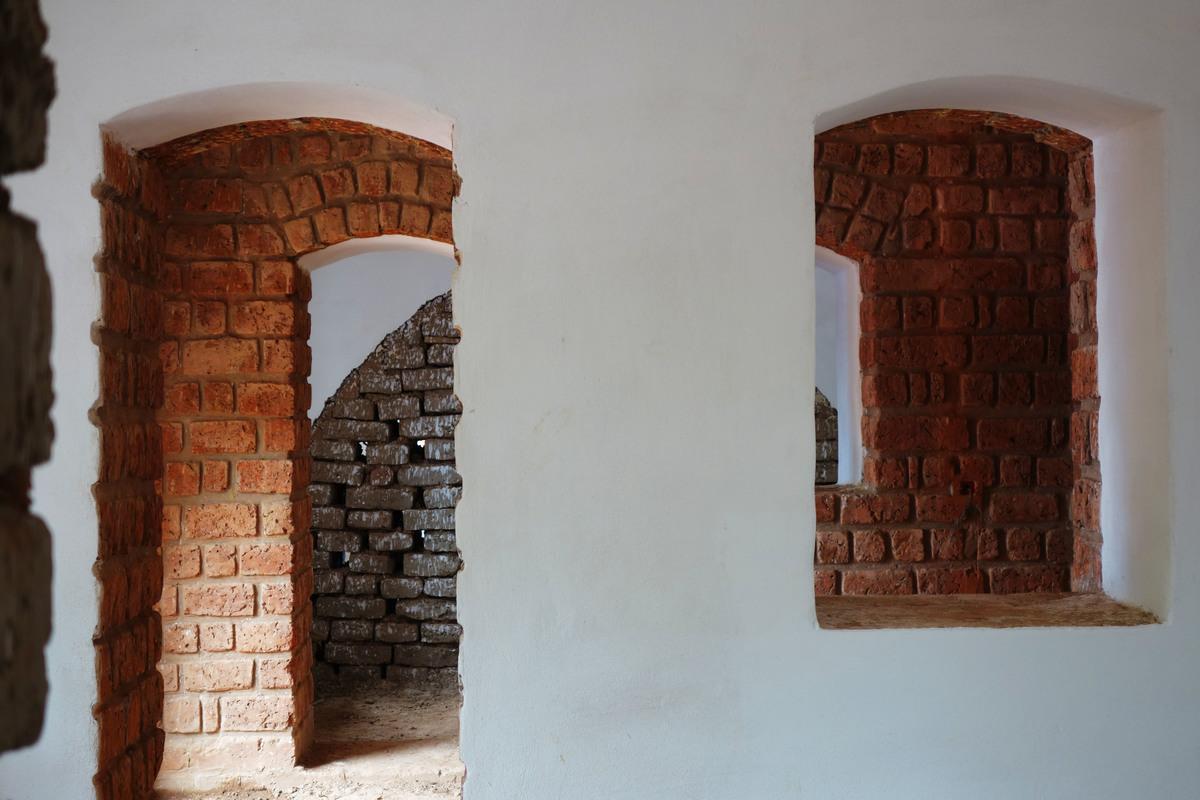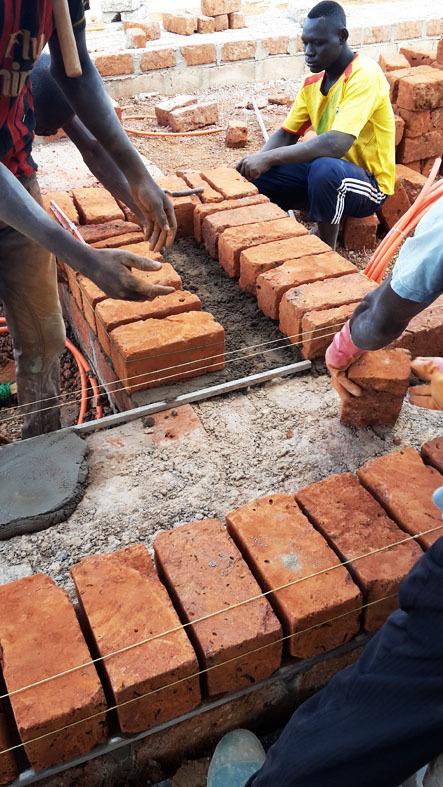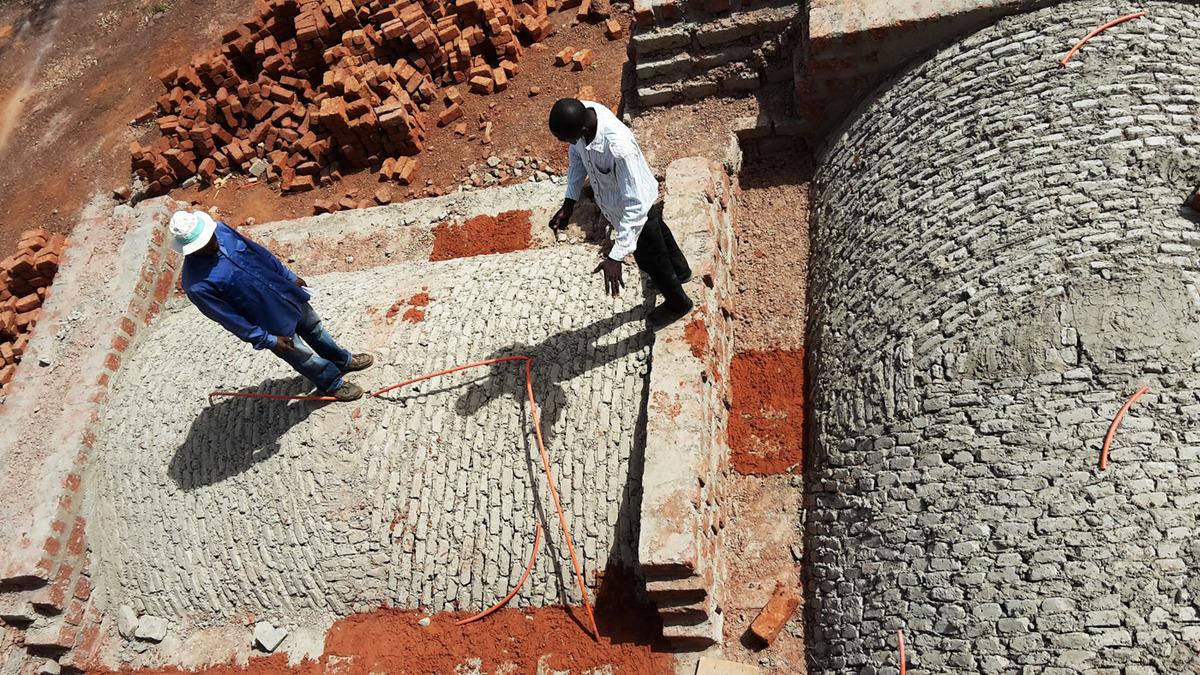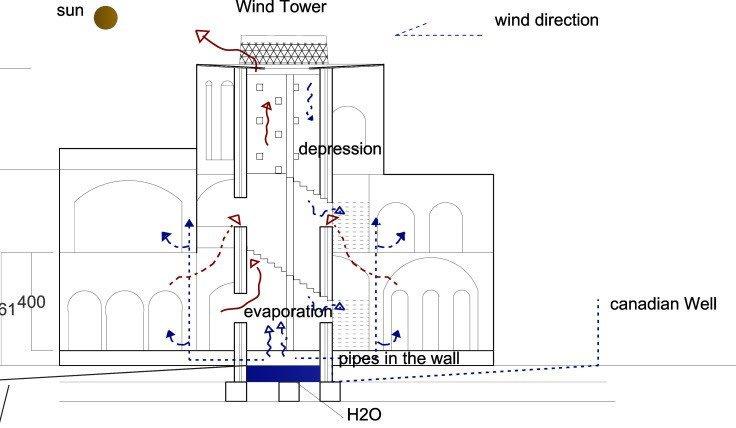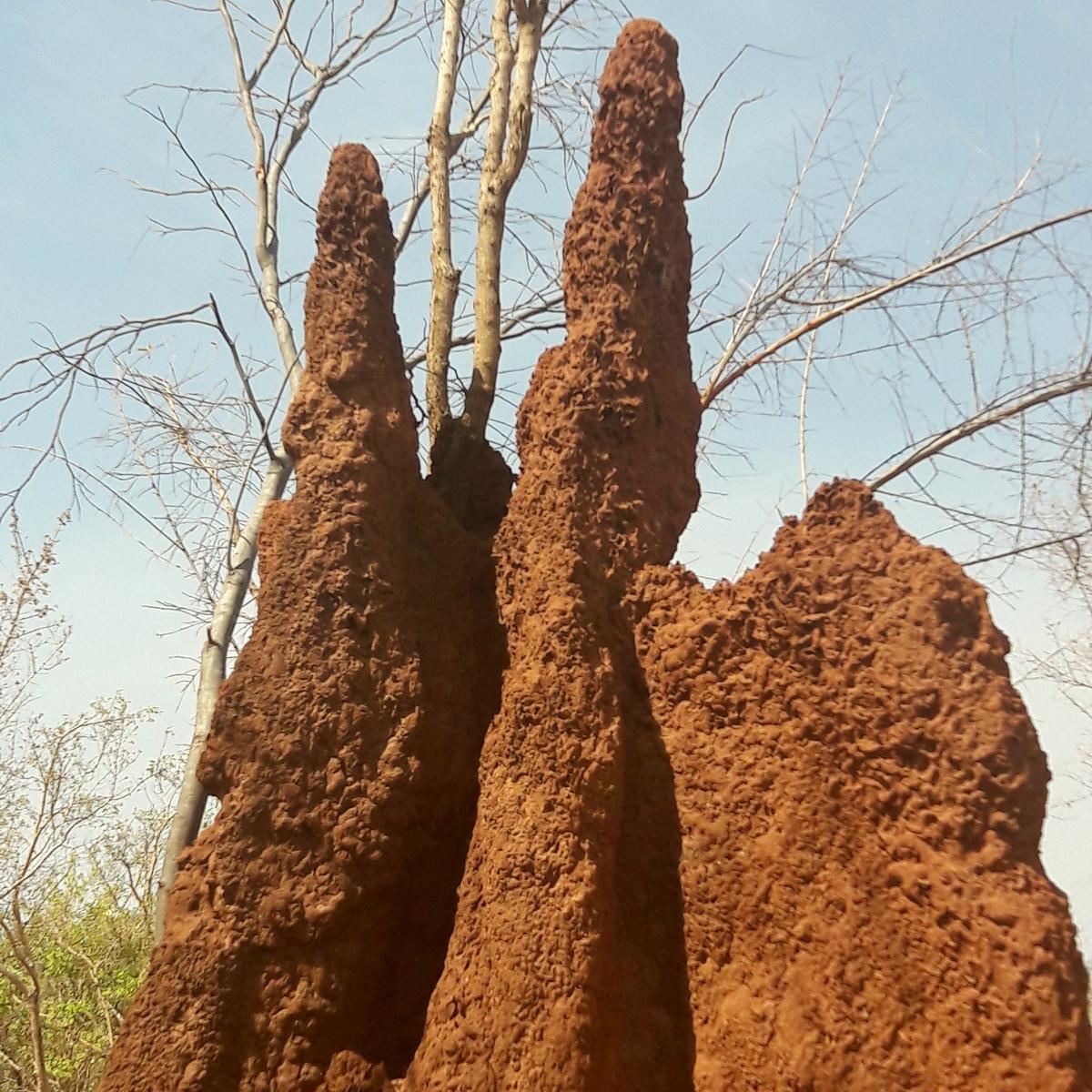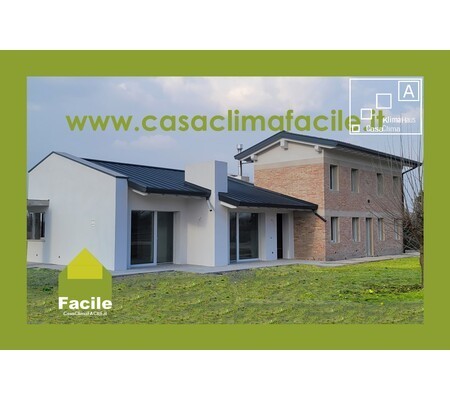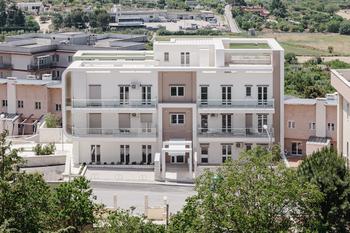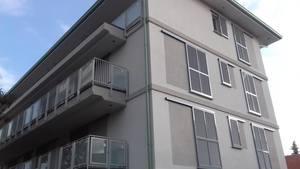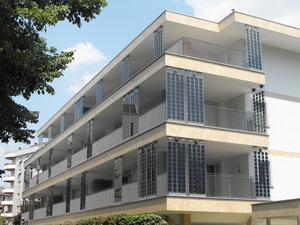LA TERMITIERE- CENTRO DI RICERCA SUL KARITE IN ZONA RURALE DEL BURKINA FASO
Ultima modifica dell'autore su 08/07/2019 - 15:06
Nuova costruzione
- Tipo di edificio : Data center
- Anno di costruzione : 2018
- Anno di consegna : 2019
- N° - strada : SATIRI, (BOBO-DSSO) bp.2081 BOBO-DIOULASSO, Altri Paesi
- Zona climatica : [BSh] Subtropical Dry Semiarid (Steppe)
- Superficie utile calpestabile : 350 m2
- Costo di costruzione/ristrutturazione : 245 000 €
- Numero delle unità funzionali : 1 Kw installati
- Costi/m2 : 700 €/m2
-
Consumo di energia primaria
50 kWhpe/m2.anno
(Metodo di calcolo : Metodo di misura sul campo (Cina) )
L'edificio è stato concepito per una impresa danese multinazionale di trasformazione del burro delle noci di karitè, preso in zona rurale del Burkina Faso. Solo le donne possono raccogliere le noci e venderle. Il progetto della Fondazione CRAAK, è stato di finanziare un Centro di ricerca sull'albero del karité, in zona rurale, struttura completamente autosufficiente, facile da mantenere ed efficiente dal punto di vista climatico. Il clima del Burkina Faso è tipico del Sahel, la fascia a sud del Sahara, che diventa in pochi kilometri da deserto a savana umida. Molto caldo tre mesi all'anno, con punte di 50°. Ma inverni freddi e stagioni delle piogge molto intense. Il committente accettò la sfida di costruire usando solo i materiali che trovavamo nella zona, nei villaggi. Fu d'accordo che alla costruzione partecipassero équipes miste di professionisti e gente dei villaggi. L'argilla la protagonista assoluta di questo progetto è usata con tecnologie molto articolate che provengono dalla tradizione nord africana: volte senza centina come le volte nubiane e egiziane. Queste volte nate in Persia sono la base dell'architettura romana.
Il progetto imita il funzionamento di un termitaio, nel piano terra del Centro di ricerca tre terrazze ventilate contenute nei grandi muri, aperte con arcate importanti verso l'esterno agiscono come sistema di ventilazione incrociata. L' effetto di ventilazione passiva è enfatizzato dalla progettazione di una torre/patio con impluviom centrale, una torre del vento in cemento armato, studiata sui Bagdir persiani, infatti la parte alta del termitaio serve per usare la differenza di pressione dell'aria (effetto BV) per far entrare aria fresca e senza polvere dall' alto e far uscire l'aria calda come da un camino solare. I muri del perimetro esterno sono spessi 80 cm e hanno aperture solo in funzione della luce.
L'edificio ha dato lavoro al villaggio per quattro anni (2015-2019), si è concluso in ritardo ma con un'importante economia di risorse materiali (2019) attivando reti di coinvolgimento sempre più larghe e diffuse. Senza sprechi di risorse umane ma impiegando il savoir faire degli artigiani. Un edificio moderno, pensato e concepito in maniera circolare, a zero effetto serra: munito di panneli fotovoltaici, con un pozzo d'acqua alimentato da sistema solare e con zona di fitodepurazione per il riciclo delle acque grigie. Un edificio-caso studio, costruito in materiali locali che riscopre tecnologie vernacolari molto efficaci per proteggere le attività umane dal clima e renderle sane.
Maggiori dettagli sul progetto
https://www.factsahelplus.com/terra-award-sahelhttps://bioarchirigotti.wordpress.com/2018/02/02/la-termitiere-en-finitions/
https://www.professionearchitetto.it/lavoro/cooperazione/c_rigotti.html
Attendibilità dei dati
Certificazione di terza parte
credito fotografico
ARCH. CHIARA RIGOTTI
ARCH. MICHAELA SOLNICKA
@visual ARCH. MARIANA MICHALCIKOVA
ARCH. ISABEL PASCUAL
ING. PIERRE LE SIGNOR
ING. OBARDIOUMA OUATTARA
Committente
Direttore dei lavori
Stakeholders
Impresa
IMPRESE DI MASTRI D'OPERA: SANON CAMILLE ET KONFE HAMIDOU CON LE LORO SQUADRE. CONSULENZA INGEGNERIA: Pierre Le Signor SRL
00226 76902068
https://www.lesignor.fr/Imprese artigianali, capi Mastri esperti e formati nelle tecnologie tradizionali migliorate sia da AVN che da DW. Consulenza del Compagnon du devoir, ingegnere Pierre Le Signor per formazione sugli intonaci in terra e calce.
Progettista
ARCHITETTO CHIARA RIGOTTI - ORDINE DI TORINO ; ARCHITETTO MARIANA MICHALCIKOVA- ORDINE DI TORINO
0039 3343756531
https://bioarchirigotti.wordpress.com/Insieme all'arch Mariana Michalcikova abbiamo concepito e disegnato l'intero progetto. Consulenza dell'arch Isabel Pascual per la struttura e elaborati permesso di costruire: Eloise Manotte.
Tipologia contrattuale
Costruzione in proprio
Approccio del proprietario alla sostenibilità energetica
Azioni del committente sul territorio burkinabé: Kolo Nafaso - potenziare le donne attraverso gli affari. Nel 2009, AAK ha avviato un progetto per potenziare ulteriormente l'approvvigionamento responsabile dei noccioli di karitè in Burkina Faso. Il progetto iniziale è stato concepito come un concetto vincente tra le donne che raccolgono i noccioli di karitè e AAK. Si chiamava Kolo Nafaso, che significa "la casa dei benefici dei noccioli di karitè". Il progetto è diventato più grande ed è diventato un programma e un modo integrato di fare affari per AAK. Il programma si concentra sul supporto, sui micro crediti senza interessi, sulla formazione e sul commercio diretto con le donne che raccolgono i noccioli del karitè. Ritenuto un successo in Burkina Faso, un programma simile è stato istituito in Ghana nel 2015, dimostrando l'impegno a continuare a lavorare direttamente con le donne. BIOARCHI è un'appendice dello studio italiano nata in seno alla cooperazione che oggi attua come consulente esperto in progetti di cooperazione e direttore lavori di progetti internazionali (Ciné Guimbi) dopo 15 anni di esperienza nel terreno.
Descrizione architettonica
Un termitaio è una struttura biogenica (fatta dai viventi) che costituisce la parte aerea del nido di molte specie di termiti. I termitai hanno una struttura a due piani: da un lato la cupola visibile, che è attraversata da molte grandi gallerie dove il vento penetra facilmente, e dall'altro nido dove tutti vivono. Nelle cassette nido dove vivono le termiti, i passaggi sono molto stretti (di pochi millimetri di diametro)e sono collegati in una fitta rete di piccole stanze che assomigliano a una gruviera con molti piccoli fori.
BAGDIR- wind-catch-tower, torre del vento, sistema di ventilazione persiano: si pensa che questo sensore del vento funzioni grazie alla piccola differenza di pressione tra la base e la parte superiore all'interno della colonna. Quindi, ogni volta ha un alito debole del vento, la differenza nella pressione dell'aria fresca nell'aria fresca parte inferiore della colonna. L'effetto di accumulo su un periodo di 24 ore è notevole.
Per la realizzazione del Centro Ricerche sul karité nell'area rurale, nella provincia di Bobo-Dioulasso, abbiamo deciso di utilizzare due tecniche:
1. Una torre centrale del vento divisa in due camere, una rivolta verso il vento dominante a nord e l'altra a sud. Nella parte inferiore della torre,semi-interrato, c'è un impluvium , riserva d’acqua piovana per attirare l'aria fresca che scende dalla sommità della torre in alto e penetra nelle sale del piano terra. La torre è in cemento armato e, nella parte superiore, le pareti accumulano calore
2. Pareti molto spesse, 80 cm, costruite di terra coperte a volta montate in modo nubiano ed egiziano. Tre terrazze attorno alla torre creano un movimento convettivo elicoidale che consentirà lo scambio di aria fresca e consentirà l'installazione di finestre su tutti i lati del patio.
La terra rossa del Burkina è stato utilizzata per i blocchi esterni, a vista: laterite è il nome dato ad una terra granitica che si trova nelle regioni tropicali del mondo, da Goa in India e Auroville a Recife in Brasile,anche in Messico, e in tutto il Sahel della savana umida.
La tecnica delle Volte Nubiane, o bovedas tabicadas, è una tecnica molto antica della Nubia e prima della Persia. La curvatura è data da un compasso/cavo di ferro posizionato al centro, facilmente ricostruibile. I blocchi di adobe/banco sono ampiamente usati oggi nei villaggi del Sahel. È una vecchia tecnica che non consuma energia e consente l'auto-costruzione. I bacini di produzione si verificano durante la stagione secca nelle pianure asciutte. Il culmine della produzione di questi blocchi viene raggiunto dopo la stagione delle piogge.
Forno per tegole/piastrelle gres di argilla cotta: fu costruito un forno per formare le donne del villaggio alla cottura delle mattonelle, chiamammo l’associazione di Djibo formata da DW di donne dei villaggi che realizzarono le prime due produzioni. Il forno è stato costruito con la tecnica della volta nubiana.
La laterite: questo suolo di granito eroso superficiale cementifica con il Sole e la pioggia, diventa molto resistente se tagliato in mattoni con facce lisce. I migliori mattoni sono in superficie. È un terreno molto plastico in presenza di acqua.
Cosa cambieresti se dovessi farlo di nuovo?
Il committente deve riuscire a mantenere un tempo slow, dovremmo unire la resilienza africana e la capacità di gestire positivamente gli imprevisti dentro uno schema flessibile ma strutturato, sostenibile.
Sostenibilità e resilienza, lavorare ancora di più con il territorio e la dimensione locale come ispirazione e coinvolgimento. Evitare di creare meccanismi perversi di competizione.
Opinioni degli utilizzatori dell'edificio
Molto soddisfatti anche se il cantiere è durato un anno più del previsto perchè durante la stagione delle pioggie è impossibile lavorare la terra.
Energy consumption
- 50,00 kWhpe/m2.anno
- 200,00 kWhpe/m2.anno
- 42,00 kWhfe/m2.anno
Performance dell'involucro
- 0,10
- 0,10
Reale consumo finale di energia
42,00 kWhfe/m2.anno
2 019
Systems
- Nessun sistema di riscaldamento
- Solare termico
- Nessun sistema di raffrescamento
- Ventilazione naturale
- Raffrescamento gratuito
- Solare fotovoltaico
- 100,00 %
GHG emissions
- 10,00 KgCO2/m2/anno
- 100,00 anno/i
Life Cycle Analysis
Gestione delle acque
- 30,00 m3
- 15,00 m3
Qualità dell'aria interna
Salute e comfort
Prodotti
Sistema sperimentale di torre del vento ripresa studiando il termitaio.

BIOARCHI RIGOTTI Architetto
0039 3343756531
https://bioarchirigotti.wordpress.com/2018/04/10/une-approche-bioclimatique/HVAC / Ventilazione, Raffrescamento
Sistema di ventilazione copiato dalla natura, tecnologie costruttive riscoperte della tradizione nord africana.
Una torre del vento usa il sistema di ventilazione naturale:
l primo è caratterizzato da una ventilazione incrociata che crea una depressione con movimenti convettivi e il secondo utilizza l'effetto Bernoulli-Venturi per far salire l'aria calda e sostituirla con aria fredda. Aggiunta di un impluvum di raccolta delle acque della pioggia. Tre terrazze per creare correnti controllate da aperture al patio.
In maniera positiva e collaborativa
Construction and exploitation costs
- 245 000,00 €
- 600 000,00 €
- 35 000,00 €
- 10 000 €
- 200 000 €
Ambiente urbano
Siamo in zona rurale,clima molto caldo tre mesi l'anno. Abbiamo necessità di realizzare un edificio autosufficiente, senza sprechi. Usando solo materiali sul posto, argilla crudae cotta, ferro riciclato, sacchi di cemento, calce locale. I professionisti vengono in giornata dalla città di Bobo-Dioulasso. La torre serve anche come belvedere per osservare la concessione. Le strade della zona rurale non sono sempre asfaltate e i trasportatori della città non vengono volentieri. La frontiera marittima è molto lontana. Sono stata architetto,capo cantiere, progettista e capomastro, il Project Manager e mediatoreculturale.
Superficie totale dell'area di intervento
5 000,00 m2
Superficie totale dell'edificio
500,00 %
Spazi verdi ad uso comune
4 500,00
Numero di parcheggi
Parcheggio macchinari agricoli coperto di 40 m2 e 8 parcheggi esterni.
Qualità ambientale dell'edificio
- Adattabilità dell'edificio
- Qualità dell'aria indoor
- Biodiversità
- Consultazione - Cooperazione
- Comfort (visivo, olfattivo, termico)
- Efficienza energetica
- Energia da fonti rinnovabili
- Processi di costruzione
- Prodotti e materiali
Motivi per partecipare al/i concorso/i
"The judicious and maximum application of local materials saves foreign exchange, creates jobs, constitutes local know-how and develops the strengths of regional cultural and technical heritage. Producing local materials to build some "test" housing units, however, is not enough. It is necessary to produce for sale, there by providing an income for producers and an enrichment for low-income populations. J.Vauthrin, Anarchy and reason for architecture, L'Harmattan, Paris, 1989, pag. 176)
Over time, Bobo grew to become a city of more than 600,000 inhabitants (http://www.mhu.gov.bf). New roa
ds appeared, along which dominates a building constructed without differentiation of materials or typology.
The orientations, the ventilation, the green and the intimacy of the inhabitants are not taken into account in the realization of the primary infrastructures or the Habitat. The environmental impact of extracting sand and gravel to build cement is not. No importance is given to runoff studies to avoid flooding and severe damage to buildings. Local governments are forced to accept projects as they come from capital or foreign offices, and their expertise is rarely taken into account at the planning stage. As a result, people prefer to live in self-managed and self-built NO LOTIS without risk.
With this project I want to attract the attention of architects and technicians who have the task of building the city in the Sahel, the need for a "healthy" habitat, made of local materials and sustainable that does not waste energy and at the same time take into account the cultures in which it will fit.
Edificio candidato nella categoria


